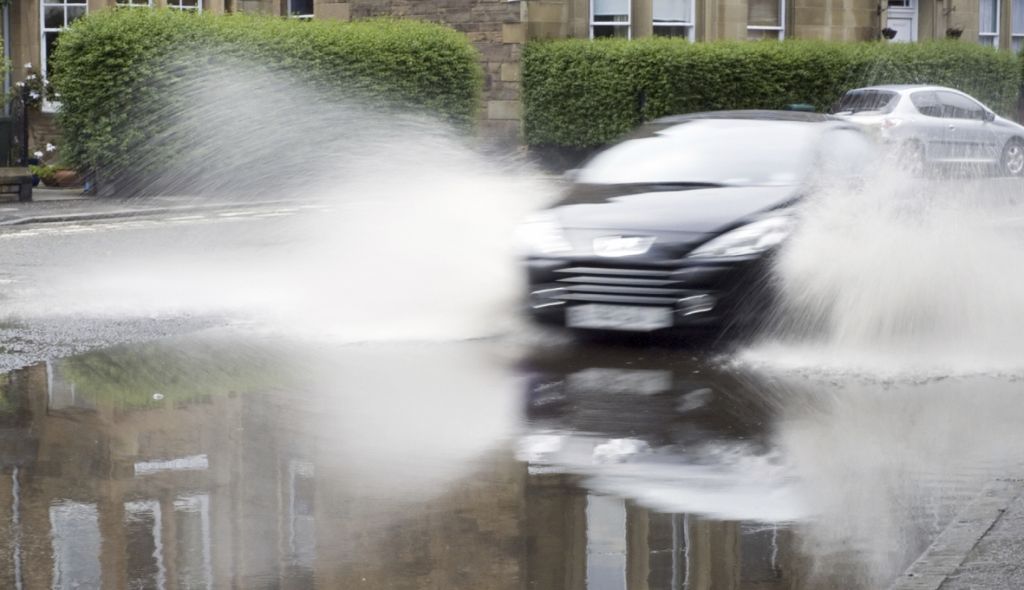Losing control: Three things every driver should know about wet roads
By DPA | 27 July 2021
BERLIN: Heavy rain and wet roads can pose a real danger to drivers thanks to the phenomenon of aquaplaning - when your car's wheels suddenly start to slip and slide along the road surface and you can no longer steer to safety.
It occurs when the tyres can no longer divert all the water passing through their treads and the consequences can be fatal if you don't know how to act and what to watch out for.
When to be wary
When there's a continuous film of water on the road surface, drivers should exercise extreme caution. Loud water sounds in the wheel arches or along the underbody can indicate a high potential for aquaplaning, as can spinning tyres or a jerking steering wheel.
If tyre tracks of the car ahead of you are disappearing very quickly in water, that indicates deep wheel ruts and an extremely high risk of aquaplaning, road safety experts say.
However, if traces of suds are visible on the road, that’s a sign that a dangerous slippery film has built up on the roads, typically after a long period of dryness followed by a rain shower.
In both cases, it is of the utmost importance to slow down and drive at double the normal safe distance to the vehicle in front, says vehicle inspection agency Tuev Sued.
How to avoid aquaplaning
In general, the inspection agency advises drivers to brake lightly here and there in wet conditions, as this can help dry off the brake coatings and discs.
In case of emergency, the tyres will then be able to grip the road more quickly. Modern and more expensive car models often take this step automatically.
The deeper the treads in a car's tyres, the better they can cope with potential aquaplaning. A new tyre with a tread seven or more millimetres deep will still be able to divert water at around 80kph, whereas a 3-millimetre tread will only be effective up to 70kph. At a bare minimum depth of 1.6 millimetres, the tyres will lose traction at just 50kph.
If aquaplaning happens, brake gently, then steer
If a driver of a vehicle equipped with ABS has the feeling the car is starting to aquaplane, the advice from technical experts is to not touch the steering wheel.
Just take your foot off the gas and don't brake too cautiously or tentatively. Only when the wheels re-establish proper traction on the road should the driver start steering again.
Trying to steer out of an aquaplane has little effect with a film of water between the tyres and the road. And the danger is that if the tyres do grip, the car could suddenly change its direction of travel.
Drivers can always carefully check with small steering movements whether the tyres have traction again. Cars that are gliding with worn-out tires on the other hand will suddenly swerve as soon as the tyres have contact with the road again.
Tags
Autos News
Reviews

First drive with the 2025 Hyundai Tuscon and Santa Fe: Seoul...

5.8
Kymco AK550 Premium: Smart easy rider

BYD Seal 6 Premium: Sweet deal, generous kit, sensible prici...

8.7
Mazda CX-80 2.5G PHEV AWD High Plus: Upmarket upgrade

Proton X50 Flagship: Tuned for success

6.6
Triumph Trident 660: Beautifully balanced package

8.4
Mercedes-AMG GLA 35 4Matic: Never a dull moment

Lamborghini Urus SE: Ultimate control
Videos

Free & Easy Media Test: Latest Proton X50 Flagship to Kuanta...

Zeekr Space Sunway City Video

Honda Civic Type R Ultimate Edition: Last 40 Units for Europ...
